The Polaroid Go was introduced at the end of April 2021. It was actually a short, nostalgic video that announced the world’s smallest analog instant camera to the audience. Given that instant cameras are usually bulky, the compact size of the Polaroid Go intrigued the majority of fans. Lots of people wondered “if it really fits in the palm of your hand.” But what everybody wanted to know was if the size and quality of the Polaroid Go film were good enough.
As a dedicated Polaroid fan (check my Polaroid Diaries here), I decided to pre-order the camera. The Go arrived in the last days of April in a small package. The initial bundle included the camera and a double pack of Polaroid Go films; at this time, there was no option to buy extra film. It took me just a couple of days to shoot both films.
So, in this Polaroid Go review, you will read my honest opinion about the camera. Apart from the things I love about the camera, you will also read my tips for better photos with the Polaroid Go. Moreover, you’ll find the pros and cons, and you’ll also see for whom I think this camera is. Last but not least, I’ll also present some of the photos I took with the first two films.
Let’s start.
*Some of the links are affiliate links. It means that if you buy something, I might earn a small commission at no additional cost to you.
Polaroid Go review: What I love about the camera
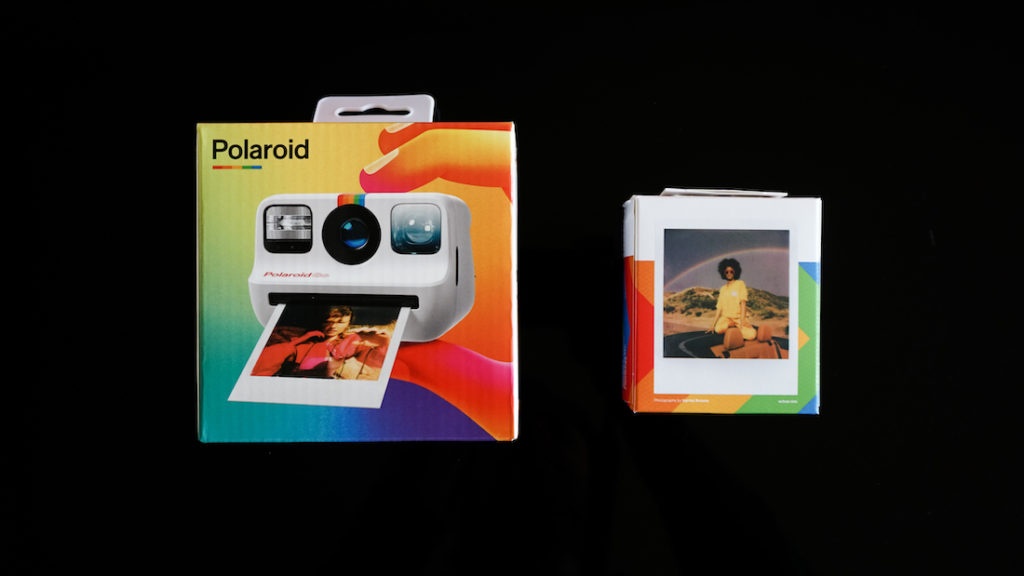
While portability is the biggest plus of the camera, there are several more things to like in the Polaroid Go. So, here’s what I love about the camera.
1. The Polaroid Go is an extremely compact camera
It doesn’t come as a surprise that the biggest plus of this camera is its size. It is 10.5 cm (5.9″) long, 8.4cm (3.3″) wide, and 6.1cm (2.4″) tall. And most importantly, it weighs 242 grams (0.53 lbs). To get a better impression, the Polaroid Go has the length, width, and weight of a modern smartphone.
Honestly, I find the Go’s size an impressive achievement. But, of course, every instant camera has lots of limitations, and creating one that it’s as compact as possible was probably not an easy task. Indeed, the camera fits in the palm of your hand!
2. Excellent battery life
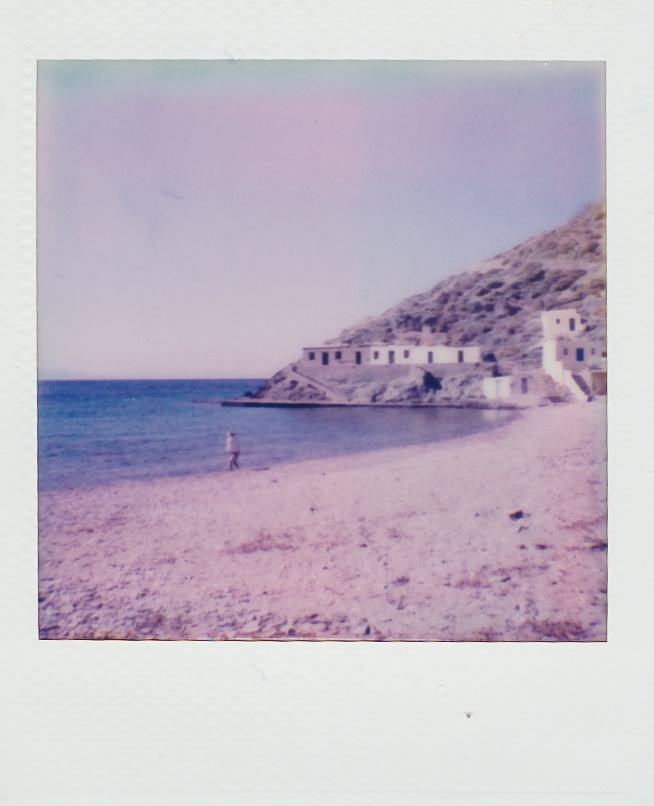
The Polaroid Go comes with a high-performance lithium-ion battery (750mAh, 3.7V nominal Voltage, 2.7Wh). The battery is rechargeable via USB. According to the company, a single full charge is good for shooting 15 packs of film. Unfortunately, I didn’t have the chance to prove the validity of this statement because the initial bundle included only two packs. However, since I used other Polaroid cameras with rechargeable batteries, I trust what the company says.
It goes without saying that I shot both films without recharging the camera. If I observe anything different after using it more extensively, I will add it here. But the ability to shoot 15 packs of film with one charge means practically that you can go on vacation without bringing a cable with you.
3. The Polaroid Go price
I’ll split this section into two sub-sections because I’ll talk about the camera’s price and the film’s price.
Cost of the Polaroid Go camera
The camera currently costs 99.99 $, and it’s probably the cheapest camera made by Polaroid you can buy brand new nowadays. So the price seems fair, and if you’re just starting with instant photography, its price is definitely attractive.
Cost of the Polaroid Go film
A common complaint regarding the Polaroid film is always its cost, especially compared to Fujifilm’s film. However, Polaroid took a step towards a fairer direction with the Go film. You can actually buy a double pack for your Go camera for 19.99$ -which is more or less around Fujifilm’s pricing. If you own an SX-70, you know that this is (almost) the cost for just one film.
Check the current Polaroid Go prices on the official Polaroid websites: The US Store | The EU Store | The UK Store
4. Easily shoot double exposures with the Polaroid Go
Double exposures are always a unique way of self-expression for the more poetic guys among us. It means that you can shoot two different exposures on a single image, combining two photographs into one. The Polaroid Go makes that straightforward: you just have to double-tap the flash button. Then, you enter the double exposure mode, and on the screen, you’ll see “1.” After you shoot the first photo, you’ll see “2.” Shoot the second one and get your layered image.
5. An impressive viewfinder for its size
For such a compact camera, the viewfinder is rather impressive. It’s actually bigger than you’d expect it to be, and it’s also a high-quality one. And there’s a plus here, too, for selfie-lovers: its front side acts like a mirror where you can see yourself and shoot a selfie.

6. Powerful flash
The flash is powerful, and you can easily fill your frame. For close-up photos in dark environments, it’s a must. I’ll write more about the flash and how to use it in the polaroid tips section, but I just wanted to state that it is really good.
7. You can use the Polaroid Go with one hand
The camera’s size has a positive effect on the ease of use. The Go has just three buttons (power, flash, shutter), and you can easily use it with one hand. And that’s a big part of the Polaroid Go charm.
8. Great specs
With a Shutter speed ranging between 1/125* and 1 second, an aperture between f/12 and f/52, and a Focal length of 34 mm (35 mm equivalent), the Polaroid Go can shoot a variety of subjects. Plus, the fact that the Polaroid Go film has an ISO 640 means that you’ll get even better results on bright days.
*According to the official website, the fastest shutter speed is 1/125; according to the Polaroid Go manual, it’s 1/300. I’ll update the correct shutter speed as soon as it becomes available.
What I didn’t like about the Polaroid Go
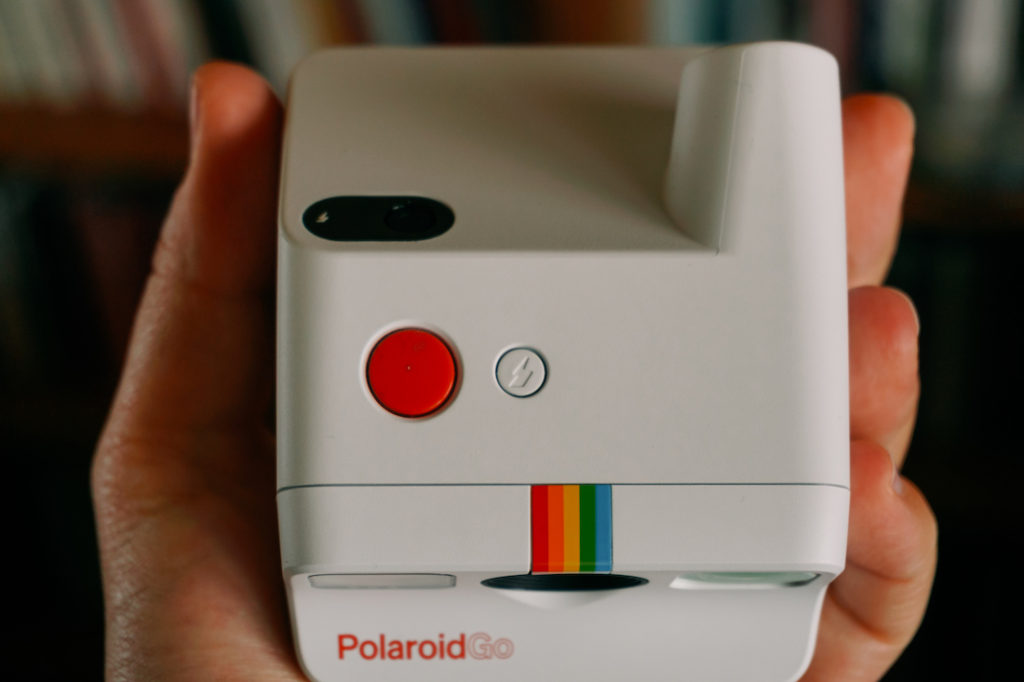
While it’s a very enjoyable camera to use, this wouldn’t be a proper Polaroid Go review if I didn’t talk about what I didn’t like while shooting. Sure, the pros are more than the cons, but here’s what I didn’t enjoy that much.
1. Number of photos in the film pack
The older Polaroid cameras had ten photos per pack. You can still use old Polaroid cameras, however, the films come nowadays in packs of 8 photos. This makes sense for older cameras because the new film is different in lots of aspects.
However, for a brand new camera that uses brand new film, I can’t explain why the company insists on including only 8 photos again. Sure, the camera would be a couple of millimeters taller, but I guess nobody would complain if this was the compromise for having 10 photos. Although the film is much cheaper than the other films of the brand, I would love to see the Go returning to the 10-photos film cassettes. It would feel more original.
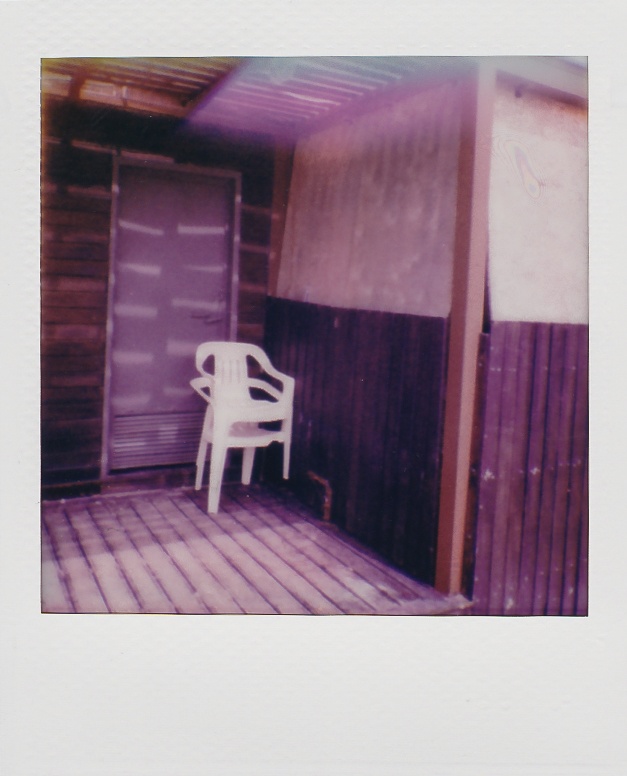
2. The size and quality of the photos
I don’t want to be unfair here. The photos are much smaller compared to the normal Polaroids, and this makes sense. The Polaroid Go is the world’s smallest analog instant camera, and as such, it could never get the usual film. So this is actually a take-it-or-leave-it: if you find smaller photos to be cute, then you won’t mind. If you, however, only like bigger photos, then the Polaroid Go is not for you.
Now, as I already said, this is a new format and a brand new film. Therefore, I won’t be hard in my judgment about the quality of the photos. It’s the first batch of Polaroid Go films, and there is certainly room for improvement. In low light, the magenta tint is present like in the i-Type films. But in bright sunlight, the photos look good.
I know it’s hard to combine the small size of the frames with excellent film quality. You can’t make an SX-70 the size of the Go. Therefore, all I’m going to say here is that I will eagerly wait for the next batches of the Go film -and I hope to see the same development from batch to batch as I saw in previous films of Polaroid.
3. The flash is always on
That’s a minor con, but still, it’s something that I wish was the other way around. The flash is always on, and this means that if you forget to override it on a bright day, your photo will be super overexposed. Most people using Polaroid cameras want to capture an instant, and they don’t bother about settings. I would so much more prefer to have the flash off and turn it on when needed, instead of having it always on and having to override it every single time.
Polaroid Go Review in brief: Pros and Cons

So, before moving to the polaroid photography tips and the verdict of my Polaroid Go review, here’s a brief recap of the pros and cons.
Polaroid Go Review pros & cons
Pros
- The Polaroid Go is extremely versatile.
- It has an excellent battery life (one charge, 15-packs)
- Very fair camera price, normally priced film
- Easy to shoot double exposures
- Impressive viewfinder for its size (plus selfie mirror)
- Powerful flash
- One hand use
- Half-pressing shutter speed locks focus & exposure
- Great specs for a wide variety of photos.
Cons
- It’s a brand-new camera but still has 8 photos per film pack.
- The film quality needs improvement.
- The flash is always ON (you must override it).
For whom the Polaroid Go camera is
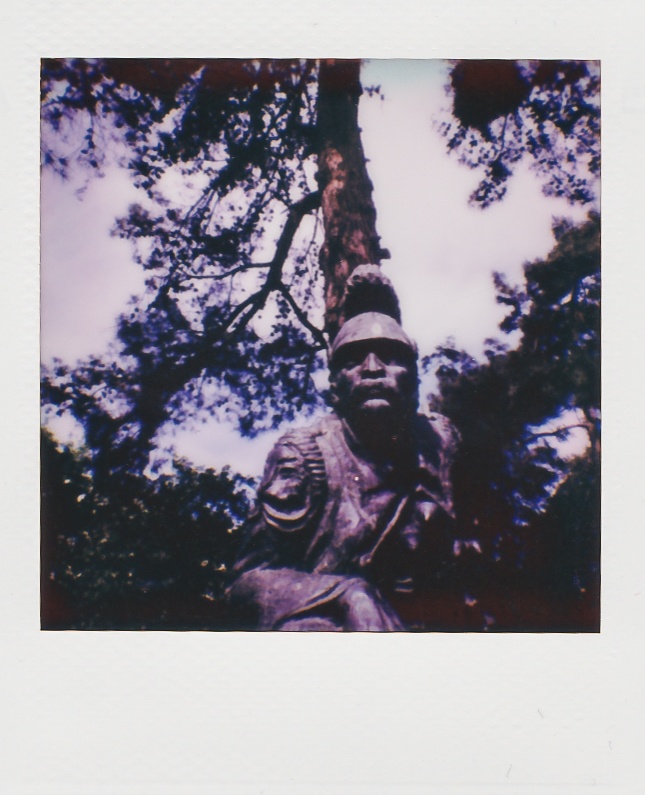
You are now wondering if this is a camera for you -and that’s why you probably searched for a Polaroid Go review. So, after using several instant cameras throughout the years, here’s what I think.
First of all, I must say that the timing that Polaroid released this camera is not random. The camera hit the market in the middle of a horrible pandemic. People can’t travel, and everybody’s feeling nostalgic for the good not-so-old days. Compact cameras represent a sense of freedom for many travelers: you can shoot a quick photo and move forward. Now, pack this nostalgia in a tiny Polaroid camera and see what you get: a camera to fuel your wanderlust.
The truth is that when the Polaroid Go came out, I instantly thought of taking it with me on a journey. I once skipped my DSLRs for the small Ricoh GR ii, and now I felt like skipping my SX-70 for the tiny Go. As days went by, I wondered if the Polaroid Go could be ideal for other instances. The more I thought, the more convinced I was, though: the Polaroid Go is a must instant camera for travelers.
This is the ideal camera for people willing to have random snapshots the size of a big stamp. You can pack 3-4 Polaroid Go films, charge the camera once, and go. It fits in your palm, you can have it in your pocket, and you’ll use it with one hand. You’ll return with 25-30 photos from your journey, and you can hang them on your fridge or wherever you like.
Apart from travelers, the Polaroid Go can be a great option for weddings or company gatherings. You can buy a few of them, give them to your guests, and have a nice photo album from different perspectives. Polaroids’ magic is that they capture an instant, and they print a few moments later. You don’t expect DSLR quality; you expect to see the moment. Polaroids were cool long before Instagram. And for weddings or company gatherings, the Go seems ideal.
Finally, I’ll take a step further, saying that this is a wonderful option for creative kids. Since this is a very easy-to-use camera, it seems like a wonderful introduction to the magic world of instant photography. I honestly believe that it’s a beautiful thing to see what a kid would photograph, and I think these snapshots will be really appreciated in the future by both the parents and the grown-up kids themselves.
On the other hand, on any Polaroid Go review, there should also be a section for whom this camera isn’t. And I must say that the Polaroid Go is not an artist’s camera. While double exposure is a nice feature, the lack of manual control will probably make it hard for artistic expression. The Go is nowhere near the SX-70, which is, in my opinion, the best polaroid for artists. The Polaroid Go is a great option for random snapshots and occasional selfies. It doesn’t mean you can’t shoot lovely photos; it just means that artistic expression will probably be very hard.
Last but not least, if you love the big, original Polaroid photo format, the Go is probably not for you. The photos are significantly smaller, and if you’d like to see details, it’s going to be tough. If the smaller size isn’t for you, but you’re still searching for a Polaroid camera, the OneStep+ or the Now+ are far better options.
All that said, if you are about to travel, attend a wedding/gathering, or you have kids, and you need a tiny instant camera, the Polaroid Go is for you. Charge it once, buy some film, and shoot memories with the world’s smallest analog instant camera.
Polaroid Go review: the camera’s accessories
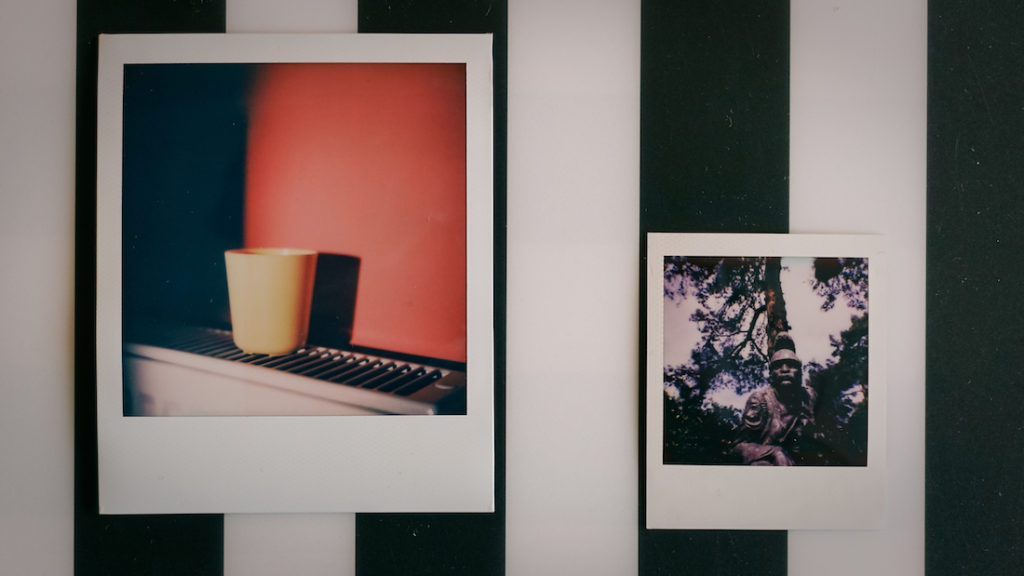
At the time of writing this Polaroid Go Review, the company hasn’t announced any accessories so far. However, I’m pretty sure that it’s only a matter of time until Polaroid announces bags or other accessories. So make sure to bookmark this article and return soon. The moment the company announces some Polaroid Go accessories, I’ll add them in this section.
Update August 2021
You can now find selected accessories for your Polaroid Go camera on Polaroid’s website. These are:
- A Polaroid Go camera case.
- The Polaroid Go pocket photo album.
- Polaroid Go wrist strap.
- An adjustable camera strap.
- A Polaroid Go photo tag.
- The Polaroid camera clip.
If you think you’d love having one (or more) of the accessories above, check them out at Polaroid’s stores: The US store, the EU store, and the UK store.
Polaroid Go photography tips

In this section, you will find some Polaroid Go photography tips. Shooting with the Go is not that different from the way I shoot with other instant cameras. However, I thought of adding a few more tips due to its small size. The more I use the camera, the more tips I’ll share, so bookmark this article for future use.
So, here are my Polaroid Go photography tips:
- Polaroids need light. With an ISO 640, the Polaroid Go is an excellent camera for bright days. Plus, the powerful flash guarantees that you can get usable images also in low light. Make sure to turn the flash off when shooting outdoors in sunlight. Otherwise, you might end up with a highly overexposed photo. And: make sure to have the sun behind you.
- Be at least 45 cm (1.47 ft) away from your subject. To avoid getting an out-of-focus shot, make sure you are at least 45 cm away from the person/object you’re about to shoot with your Polaroid Go.
- Half-press the shutter button to focus. You can focus on your subject by half-pressing the shutter button and locking the exposure. Then, fully press it to capture the photo.
- Switch on the flash indoors. The flash is useful when you’re shooting indoors. Therefore, have it ON if you shoot at home. Make sure that the subject is a maximum of 2 meters (6.56 ft) away from you. That’s the flash limit of the Polaroid Go. For anything beyond that distance, the photo will be underexposed.
- The Polaroid Go is for portraits and close-ups. The Polaroid Go photos are much smaller in size, and it’s hard to fill them with details. So your best option when using the Go is to aim for close-ups and portraits. Start with your family and friends and shoot several photos.
- Don’t shake your polaroids. No, they won’t develop better. In fact, you might damage the image. The chemicals are sensitive, and you might get a lower-quality photo if you shake it.
- Polaroids need darkness to develop. After shooting a photo, put it straight in your pocket. Keeping them close to your body temperature ensures that polaroids develop under the best conditions. Leave the polaroids for at least ten minutes in your pocket.
- Scan your polaroid photos. If you do, you’ll have some images to share on Social Media, but you will also have a digital archive. Don’t believe the hype: although a professional scanner will give you better results, you can scan polaroids in every flatbed scanner. Use high resolution (I go for anything between 300 and 600 dpi) and scan them as TIFF. For me, that’s the best way to get the exact colors on screen.
- Last but not least, store your Polaroid Go photos in closed boxes. This will guarantee that the polaroids won’t fade away and that you’ll let them develop further. Sometimes polaroids need up to 30 days to fully develop. By storing them in safe and dark places, you maximize their life.
Buy your new Polaroid GO camera straight from the brands’ official website
Polaroid Go review: The verdict
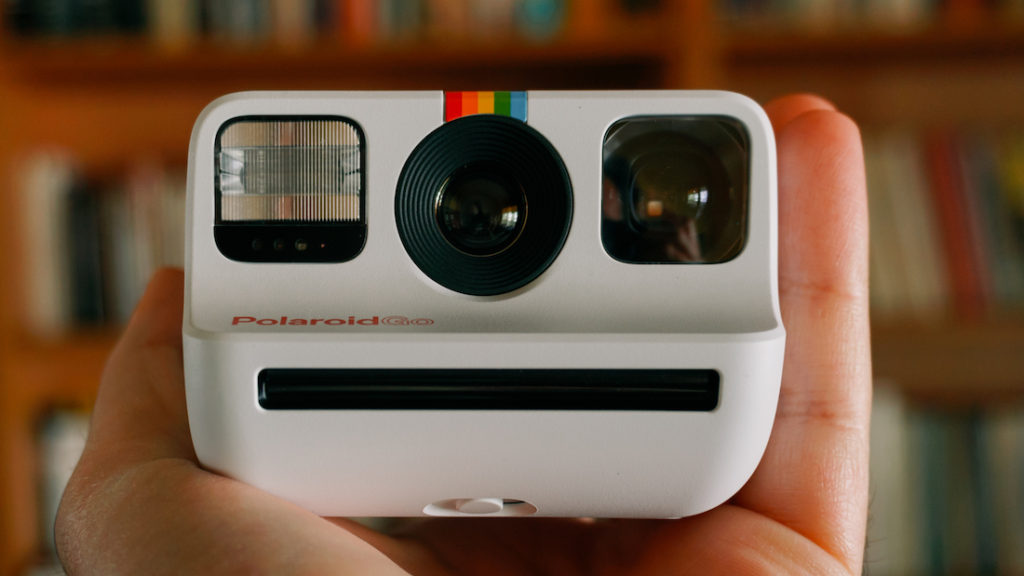
The Polaroid Go is not a toy camera. It might not be as advanced as other Polaroids, but this doesn’t mean that you can’t shoot nice photos with it. This is not your typical all-around instant camera, but it’s definitely the most compact one. You can use it with one hand, the film is significantly cheaper, and the camera has a beautiful design.
The moment I unboxed it, I was thrilled by its size. It made me feel that I would love to go on a journey and shoot some photos. Yes, the size of the images is much smaller, and details might be lost. But if you want to shoot a polaroid selfie, capture a moment with friends, or get a close-up of a wildflower, the Go makes it possible. If you’re bored of having thousands of digital smartphone photos and you need an analog feel, the Polaroid Go is for you. After all, it’s as light as your smartphone.
Get your Polaroid Go and the freshest film on the official Polaroid websites:
United States, Europe, United Kingdom
More Polaroids: My Polaroid diaries, My OneStep+ review
More gear reviews: Ricoh GR ii, Osmo Pocket
Pin it for later

If you enjoyed this Polaroid Go Review, feel free to share it on FB and Twitter with your friends.
Last Updated on December 2, 2022 by George Pavlopoulos

